Brand spotlight: The hidden pleasure that is Le Merj
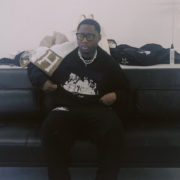
By Jason Kwame
It’s always refreshing when you come across a brand like Le Merj.
These days, a black-owned, British clothing line with a unique and consistent brand story, dedicated to the true craft of fashion design (not just a mediocre print on a tee), organically going up the ranks is hard to come by. Especially a line that is unclouded by hype and clout, yet still influencing fashion at the top. Though still in its early days, Le Merj achieved all the above. Like newfound land or a hidden treasure, the brand already has the style-conscious premier league footballers and influencers showing interest and rating its pieces without forcing it. If it isn’t on your radar already, it should be.
You’ll see glimpses of American creative influences in the design – the current LA liberated, rockstar-cowboy niche fashion seen on the likes of Travis Scott, Future, and Asap Rocky. This doesn’t always translate well in the UK, but Le Merj has it on lock. Even down to the thought-provoking names of each item. The best of its offerings include reworked fitted caps, wide legged custom jeans, leather saddle-inspired pouches, hand-dyed distressed hoodies and flannel shirts with well thought out graphic sketches. So basically the whole collection is noteworthy.
Emmanuel, a 24-year-old architecture grad and a self-proclaimed atelier “attempting timeless design”, is the “one man army” behind the brand. He has earned the title – his talent is unmatched. Which other young man do you know envisioning and producing chairs, designing clothes and reworking custom Air Forces? Upon the announcement of his latest AW21 collection “Business with Pleasures”, I had to pick his brain about how he got into such high level taste-making, and where his vision and deep understanding of design came from. The conversation and answers made for an eye-opening and alternative look at this generation’s fashion choices and the requirements to create any valuable product. Without a doubt his words will be of value to any and every creative. Keep reading and see how he paints a perfect picture of the design process….
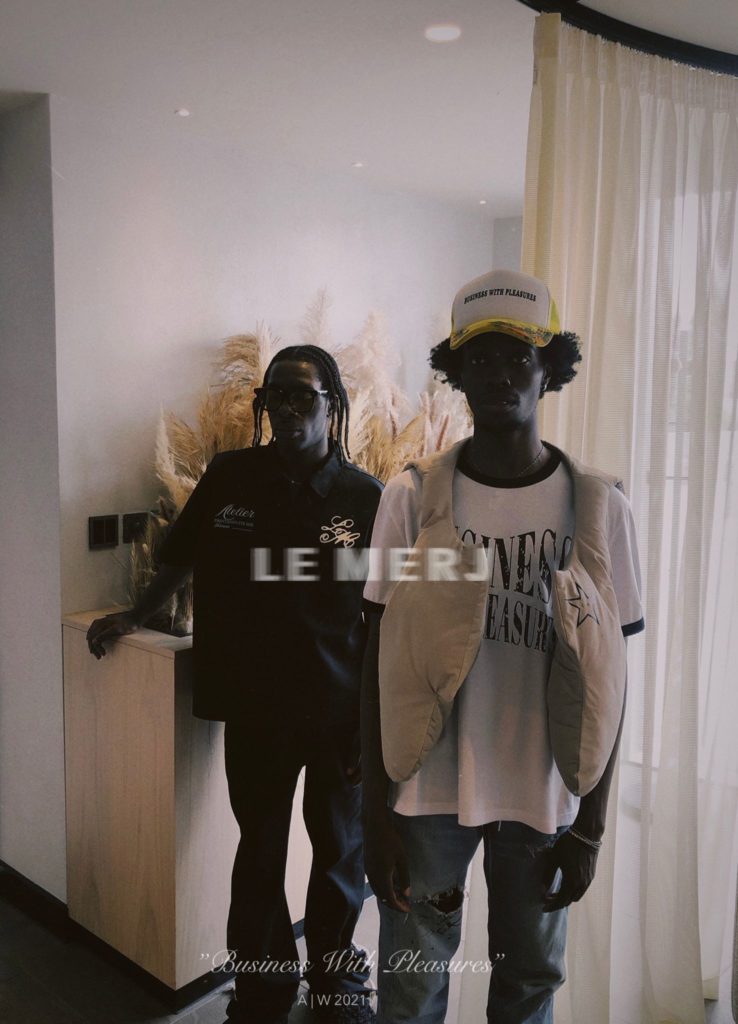
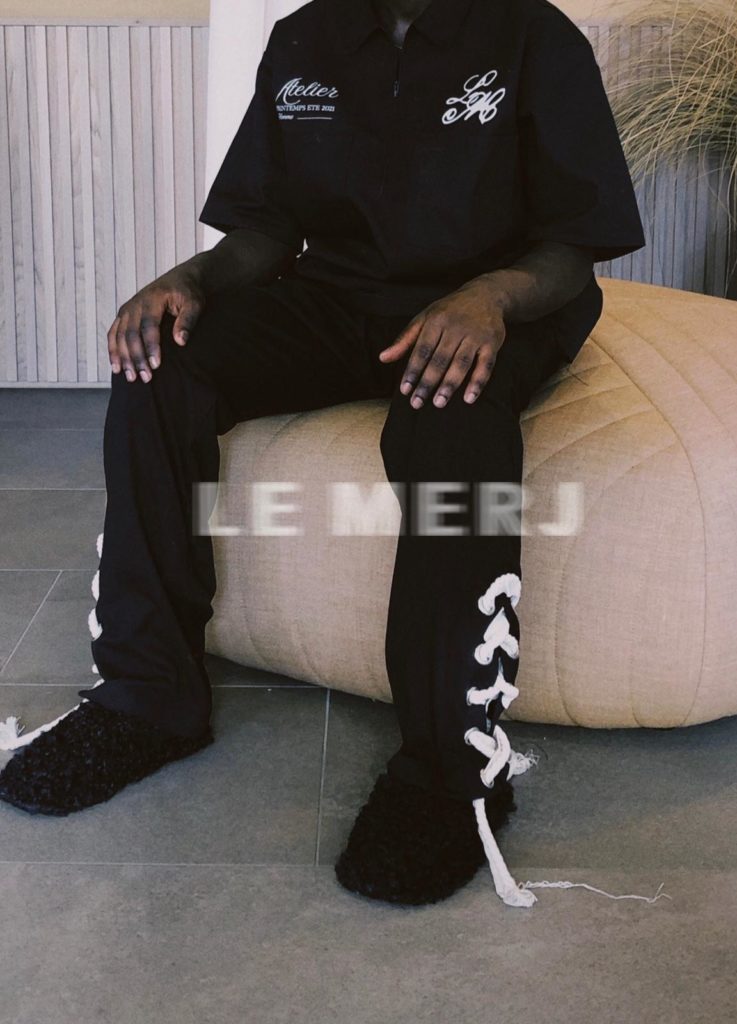
So what was your journey and upbringing like? How did you figure out this is what you wanted to do?
So I grew up in Manchester, but I’m from a Nigerian background. I [always] indulged in design…the life of design and work of design, using design to please people and knowing the accessibility of what one should sell and what one shouldn’t sell.
I’ve been into the concept of design since 15 or 16, and I was taking art courses…but the buildings I was drawing…weren’t very proportional…at all [laughs]. I was also teaching myself via Youtube by looking at different artists like George Condo, Reginald Sylvester and stuff like that, then seeing how you can draw abstract…it doesn’t always have to be proportional. There my interest in art grew, which turned into an interest in design. I actually wanted to study interior design. But I spoke to my Uncle who is an architect, and he advised that I study architecture, as it’s [arguably] higher up in the hierarchy of design.
So yeah I went into that for three years, and Le Merj was born, it was actually the first year that I realised that I wanted to supply people with tasteful designs…giving people separate aspects of design all in one layer. I try to portray that in clothing…because I understand that what I wanna do…where i wanna take this brand is a place where things have to be taken step by step. I can’t delve straight into the interior design world, or the architecture world. I need to understand how each user/customer actually reacts to products one by one. I.e. the user world, apparel world, interior world. Users can come to one place [Le Merj] and receive an influx of tasteful design, where it’s like a pair of pants with a specific silhouette that will draw your attention to a lamp that’s in the same studio, or the lamp drawing you to an art piece that compliments it. To make you appreciate the identity of the brand more…
So Le Merj is this concept of merging all aspects of design into one. [The name itself] is a tasteful…made-up word just for my cause and understanding of that. People do mistake it for a Parisian brand…because of the name and the fact that it’s high-end at such an early rate.
Who or what are some of your inspirations? You have a similar approach to brands like Rhude…
My inspiration comes from all sorts of realms to be honest. I usually wait to see something…I don’t go and look for inspiration…I feel like I’m generally already looking at the things I like in my day to day life. It’s kind of a natural process…that’s why I think I don’t have a specific map of where my inspiration comes from. I’m constantly inspired…for example by Rick Owens silhouettes…and I may use them as mood boards but I’ve never actually used a direct iteration from them. The main thing that keeps me inspired is people like Rhuigi (Rhude), Jerry Lorenzo, Raf Simons…because there’s a level of understanding of the user…when I hear them speak…even Virgil…they speak about the user quite a lot. It’s almost past thinking about the pieces of clothing, it’s like you’re actually selling a product like an ipod. That’s the same way I consider why a t-shirt may fit better boxy than long…why the sleeves should come up lower, why the neck should be tighter… or why the torso should be shorter. It’s the simplicity of things like that, that makes it more inspiring, like understanding why these people are where they are. Design comes first and marketing comes second.
Where did some of the deep design names come from? Like Loneliless, and Chromestar? Trailer Denim?
Loneliless came from my time at Uni, I felt alone. [Imagine] everyone’s tryna get their architecture work done, and they walk past my computer and I’m working on [clothing] designs. They were thinking “it’s 3am, and you’re not even designing your building, you got a deadline in 2 days”. At the time it wasnt even Le Merj artwork yet, I was just messing around on Photoshop, I felt lonely. I felt like there was no one to talk to about this stuff…cos architecture’s quite an intense course…so nobody wants to be distracted. I was lonely in that I had no help in terms of guidance and feedback…
But bear in mind I only graduated last January, and as soon as I finished my course I started designing..then I didn’t feel as alone anymore. There were friends I could talk to, to know what a consumer wants….people I could send artworks to and ask if it looks good…I am still a one man army though. I’m less lonely now…so LoneliLESS is the concept of feeling less lonely than I was before…but I am still on this journey on my own
Chromestar was more of a thought within myself…the tones were very earthy, so I felt like I needed a staple piece…a piece that gives the user an understanding that it’s not just about tones or silhouettes. So I had some chrome vinyl that I had shipped over and I was sampling it so…yeah..it speaks for itself. Chrome is very very hard and dense. [Plus] There was another colour that I was playful enough to use at the time
Trailer denim…that piece is quite meaningful to me. It showed me that I could complete a collection. I was finding it hard to complete a design for a final pair of pants. Where we are in the culture of denim right now is either skinny, baggy or straight…there’s no middle ground..as you can see the silhouette comes in at the knees, then it flows and stacks at the bottom. As you see on the model, it’s very flattering to any size…it was made to accompany the flannel shirt.
I was watching a Reese Cooper interview and a Breaking Bad ad came on…Hank had just walked out the trailer park in some nice denim and I literally took a picture of the screen and I sent it to everyone that I previously was looking for swatches from and asked “can you get me this colour”. I finally got a hold of that shade of denim…and now it compliments the look.
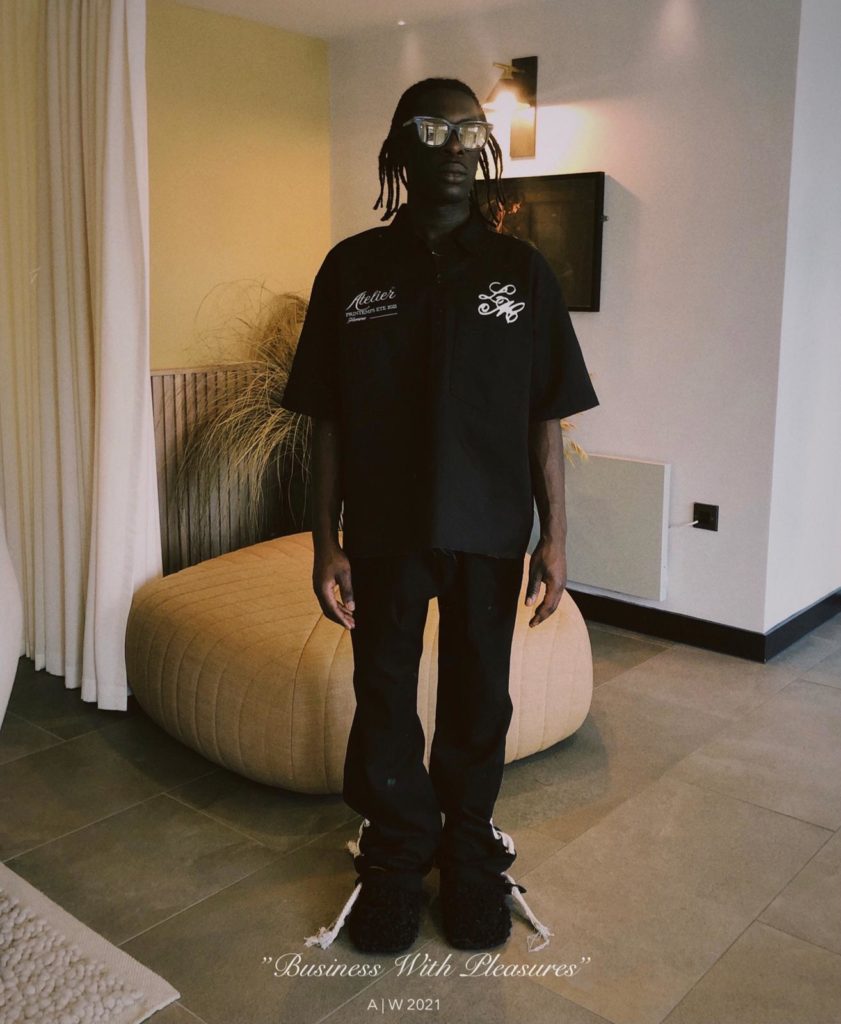
What are you bringing to the fashion game?
I’m bringing an understanding of taste. Sometimes I’m surprised at my clientele…I receive a certain type of clientele from a certain demographic and I’m surprised that they purchased or surprised that they’re interested in what I have to offer. So I feel like I’m bringing a distinctive identity and an understanding of separate aspects of design. A lamp silhouette could be inspired by a dress and vice versa. Or the colour of a couch, I could take a swatch and it could make a perfect pair of pants. I’m bringing more of a fresh understanding that it’s okay to widen your horizon and understand different concepts and try and make them one.
Without giving the blueprint away, what’s the design process like for you?
I design all my designs, I paint all the artwork, I design all the furniture as well…it is just me. It’s about knowing myself more than anything. I’m producing for myself [before anything else]. It’s more about having the same language…not really about trying to match colour for colour. [Also] it’s about what products actually compliment each other rather than look better than each other. I’m not tryna put a look out where the t-shirt is more appealing than the pants…my idea is for you to want the whole look. I feel like that’s my angle when I design.
Also with like jeans, the cuts – how it falls and how it sits – that’s important to me as well. That’s where the luxurious, timeless part comes into it. I’m about silhouettes and panels that won’t give you anxiety when you put an outfit together…it’ll probably make you want to buy the whole outfit…that’s where the concept of timeless design comes from
The dyes are sourced from America. [Previously] I never used colours in my artwork even. [You can see] it’s a chaotic pattern…but the reason why it is called camo is I’m trying to blend it all in.
Quality-wise? Right now I’ve only been in the game for 9 months…in terms of quality, there’s still a long way to go.
So what was the concept behind the separate Villa Le Merj/Chateau drop?
It’s almost like part of a project I actually debuted for my last degree show. It was my kind of last hurrah at uni. It’s my own personal concept of what I wanted to do at Le Merj…a place where you can go to experience, learn, indulge and just feel. It’s more of a conceptual haven, in my mind. I go to that place in myself. Even that artwork, I’ve had it in my head for like three years now. That’s [creatively] where I work, design and find inspiration. It’s meant to look like merch, like you’ve gone to Villa Le Merj and you’ve got yourself something from the gift store. [That’s why] You see the avant garde, aged look.
It’s understanding that ideas that are so in depth and so conceptual and fiction – yet realistic to me – can be portrayed on a sweatshirt and a pant. And because of the honesty behind it, it speaks for itself and looks clean.
So, what’s next? Have you started thinking about SS22? If so, what can we expect?
Definitely. So, Version 2 pieces: so a version 2 of the previous flannels, shorts and Birkins [shoes]. Everything else will be new, there’s gonna be a lot of long sleeves, more boxy and enticing and tasteful silhouettes. Especially with the pants. Some special made-to-order pieces as well, and accessories of course. Version 2 will be one to remember. It’ll show what keeping up appearances actually means…and how to do it.
I’ve learnt a lot, and obviously my taste has grown as a designer and I know more about where I wanna go as a designer. For example, how I want artworks to look on certain pieces, experimenting with colours, understanding how much a shoulder sleeve should drop, perfect lengths that will ensure it has a luxurious feel etc.
Make sure to indulge in the AW21 Le Merj “Business with Pleasures” release at www.le-merj.co.uk
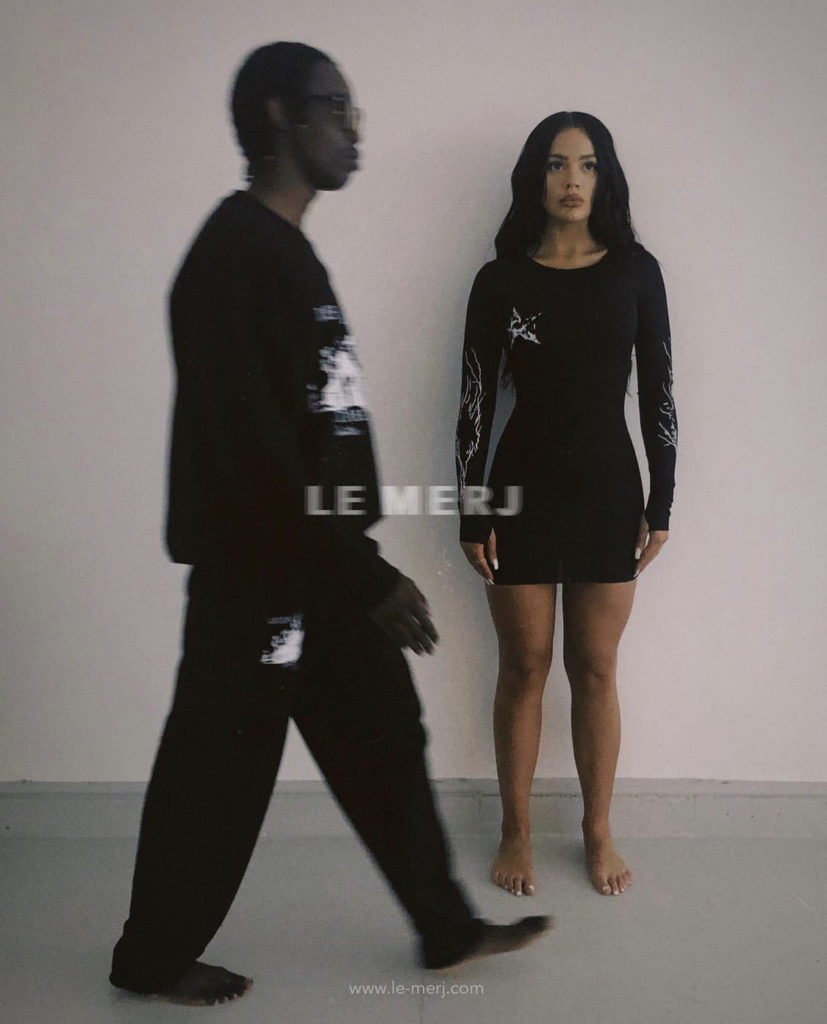
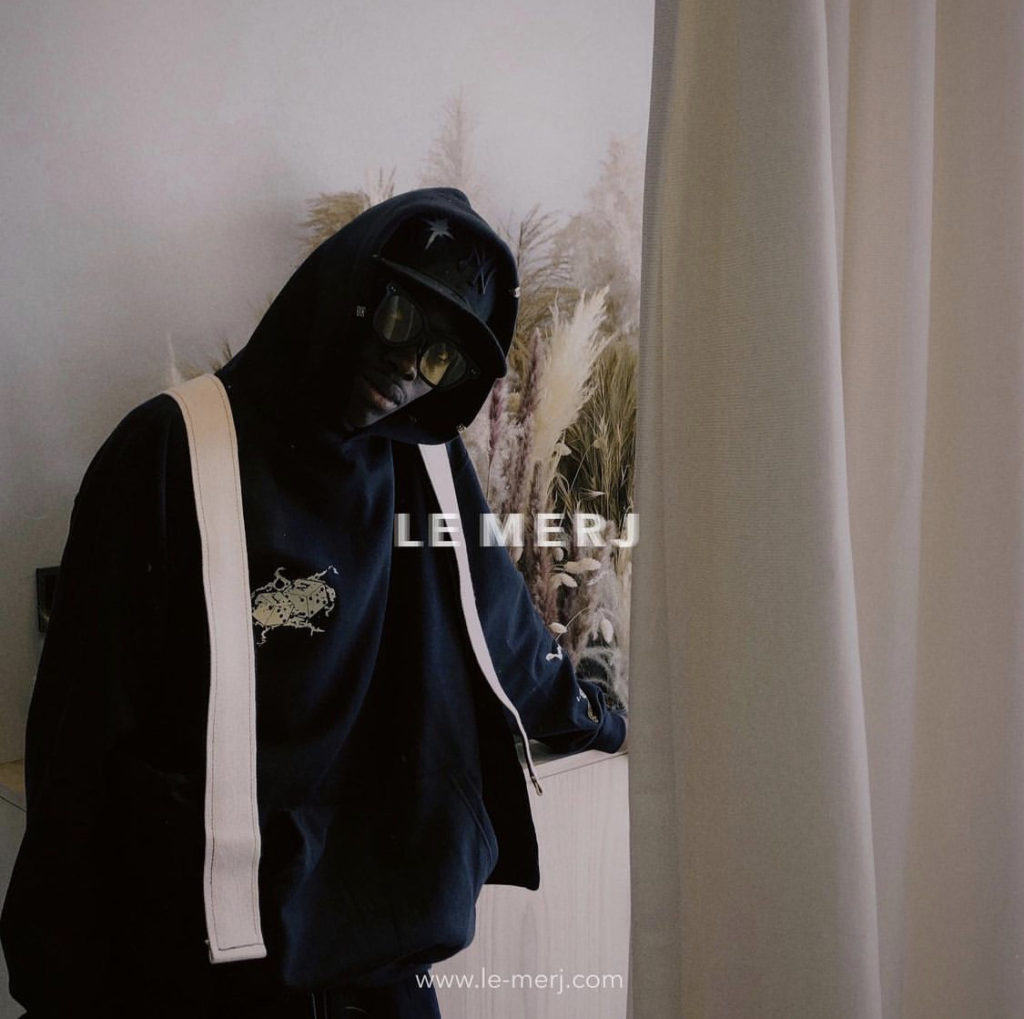
Discover more from GUAP’s Fashion section here





![ZINO VINCI’S ‘FILTHY & DISGUSTING’EP BRINGS YOU TO THE CORE OF THE ARTIST [@ZinoVinci]](https://guap.co/wp-content/uploads/2023/10/Zino-4.jpg)




1 Comment
[…] we first interviewed Manchester based architecture-grad Emmanuel back in 2021 about his tastemaking Le Merj designs, we knew he was in the process of […]
Comments are closed.